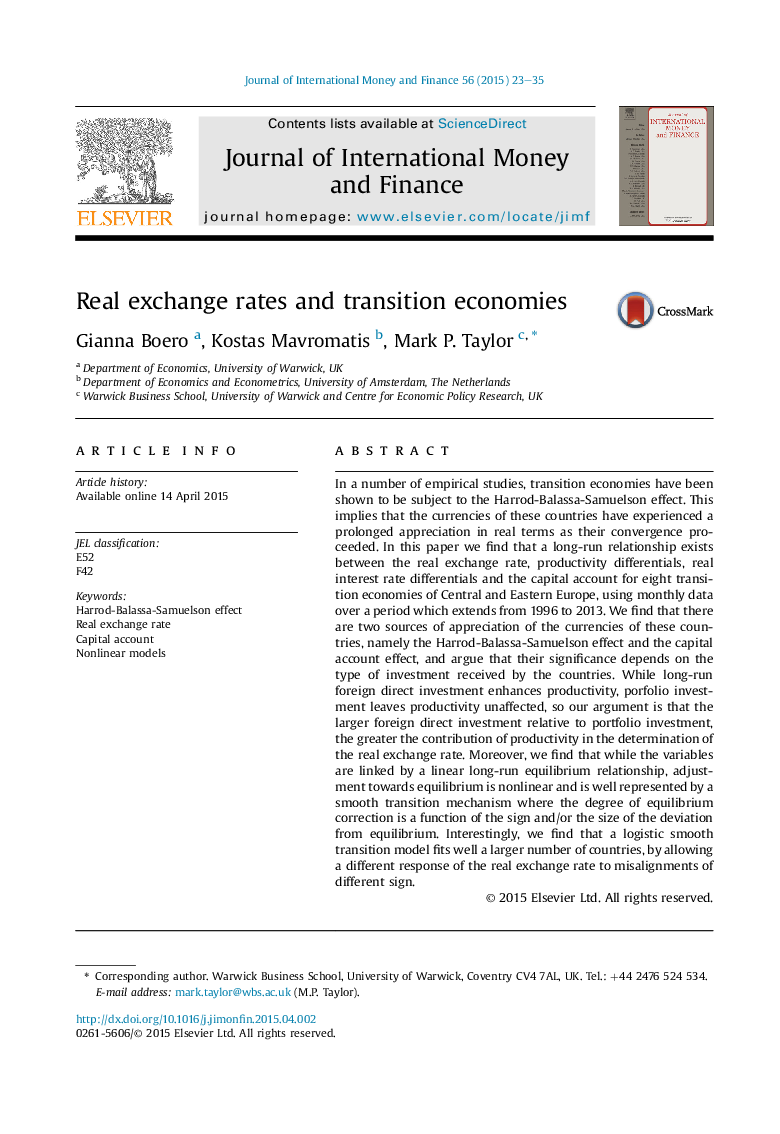| Article ID | Journal | Published Year | Pages | File Type |
|---|---|---|---|---|
| 963350 | Journal of International Money and Finance | 2015 | 13 Pages |
Abstract
In a number of empirical studies, transition economies have been shown to be subject to the Harrod-Balassa-Samuelson effect. This implies that the currencies of these countries have experienced a prolonged appreciation in real terms as their convergence proceeded. In this paper we find that a long-run relationship exists between the real exchange rate, productivity differentials, real interest rate differentials and the capital account for eight transition economies of Central and Eastern Europe, using monthly data over a period which extends from 1996 to 2013. We find that there are two sources of appreciation of the currencies of these countries, namely the Harrod-Balassa-Samuelson effect and the capital account effect, and argue that their significance depends on the type of investment received by the countries. While long-run foreign direct investment enhances productivity, porfolio investment leaves productivity unaffected, so our argument is that the larger foreign direct investment relative to portfolio investment, the greater the contribution of productivity in the determination of the real exchange rate. Moreover, we find that while the variables are linked by a linear long-run equilibrium relationship, adjustment towards equilibrium is nonlinear and is well represented by a smooth transition mechanism where the degree of equilibrium correction is a function of the sign and/or the size of the deviation from equilibrium. Interestingly, we find that a logistic smooth transition model fits well a larger number of countries, by allowing a different response of the real exchange rate to misalignments of different sign.
Related Topics
Social Sciences and Humanities
Economics, Econometrics and Finance
Economics and Econometrics
Authors
Gianna Boero, Kostas Mavromatis, Mark P. Taylor,
